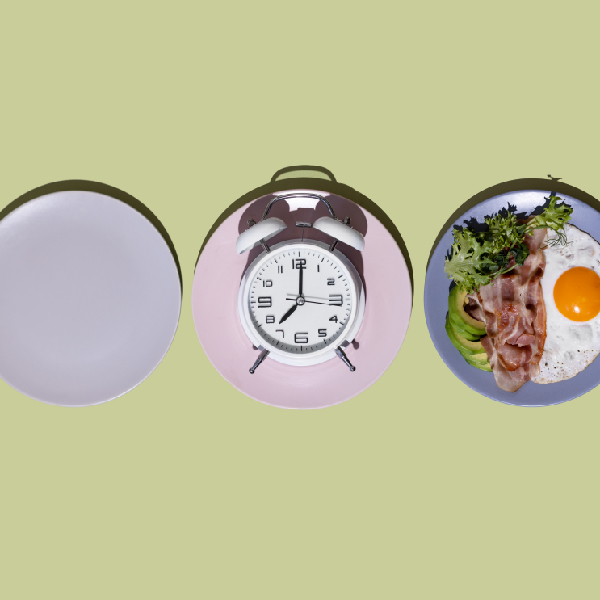Glycemic index (GI) is a measure of how fast a carbohydrate-containing food raises blood glucose levels. Carbohydrates are ranked as high, medium, or low GI. This ranking is based on a comparison of the food to a reference amount of white bread or glucose. Below are some foods with GI ranges to give you a better idea of the concept.
- Low GI (55 or less): 100% stone-ground wheat bread, oatmeal, pasta, barley, yam, most fruit, dried beans and legumes, quinoa, milk.
- Medium GI (56-69): Whole wheat, rye, sourdough bread, quick oats, corn, couscous, brown rice, ice cream.
- High GI (<70): White bread, cornflakes, instant oatmeal, russet potato, sweet potato, pretzels, rice cakes, melons, pineapple.
The tricky thing about GI is that there are a number of factors that influence the GI of a food in the context of the diet, and this is why it is not recommended to just use GI for meal planning. It’s a good idea to use GI in conjunction with other meal planning approaches to assist with making the best food choices for optimal glucose control.
Here are some of those variables that affect the GI of foods and strategies to assist with lowering the GI of your meals.
- Degree of Ripeness. The more ripe the fruit the higher the GI. For example, a soft ripe peach will yield a higher glucose response than a firm peach, so keep this in mind as you enjoy summer fruit. What can you do about this? Consider your produce shopping practices. Purchase fruit firm and limit your purchases of fruit to what you will eat in 2-3 days (if possible) or store all fruit in the refrigerator to slow down the ripening process.
- Acidity of the food lowers the GI. This is why sourdough bread (that is made using lactic acid culture for leavening) has a lower GI than white bread. Ways that you can use this point to your advantage: for that fruit salad that you make using very ripe fruit, try adding a little lemon or lime juice to lower the GI. Also, flavored vinegars can be used to enhance the flavor of foods and add acidity to reduce the GI.
- Processing of food affects GI. Raw food has less impact on GI. Think about an apple, applesauce, and apple juice. The raw apple has the lowest GI because it has not been processed; whereas, the apple juice has the highest because it is the most processed. This also explains the noted differences in the GI of stone-ground whole wheat bread and whole wheat bread. Stone-ground is less processed; therefore, it has a lower GI. Continue to minimize processed foods in your diet.
- Cooking time. How long some foods are cooked impacts the GI. In Italian cooking you learn to cook pasta al dente (to the tooth) means serving pasta firmer. Not only is al dente beneficial for taste, but it lowers the GI of the food making it the diabetes-preferred way to prepare pasta too. Could varied cooking times of your pasta dishes be the reason why the same meal in the same portion size yields a different blood glucose response on different occasions? Try being more consistent with cooking it to al dente and further lower the GI with an acid ingredient like a vinegar or a tomato-based sauce instead of white sauce. It’s worth a try.
- Hot or cold. The temperature of certain foods impacts the GI. A study published in the April 2005 Journal of the American Dietetic Association found that the GI of boiled red potatoes consumed the next day cold was 56; whereas the red potatoes boiled and eaten warm had a GI of 89. This most likely has to do with resistance starch lowering the GI. An idea is to have redskin potato salad in place of potatoes served warm sometimes.
Hopefully, you are starting to see that in eating well-balanced meals with a combination of foods you can’t rely solely on the GI value of a food to predict blood glucose response because there are so many factors to take into consideration. You don’t have to stay away for high GI foods altogether because there are some healthy foods that have a high GI. Like don’t forgo a sweet potato for a chocolate bar because it has a lower GI–keep it in perspective. Think about some of the ways mentioned here to reduce GI responses. Also, using the GI values to balance high GI foods with low GI foods can be beneficial. Consider these points when you are problem-solving and making decisions about your meals.
If you are interested in more information on the topic, here is a link with more GI reference values.




